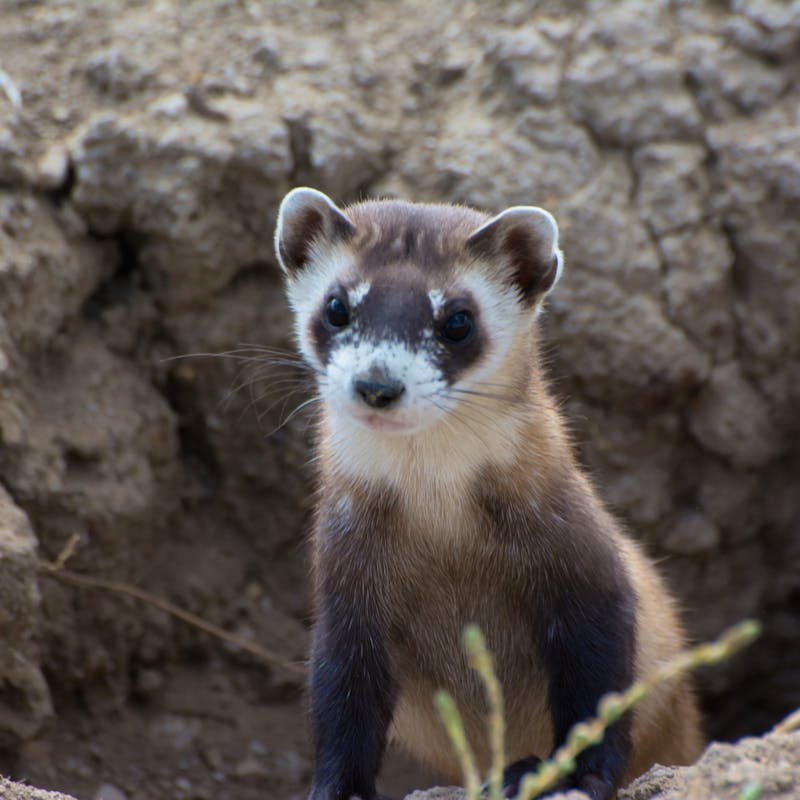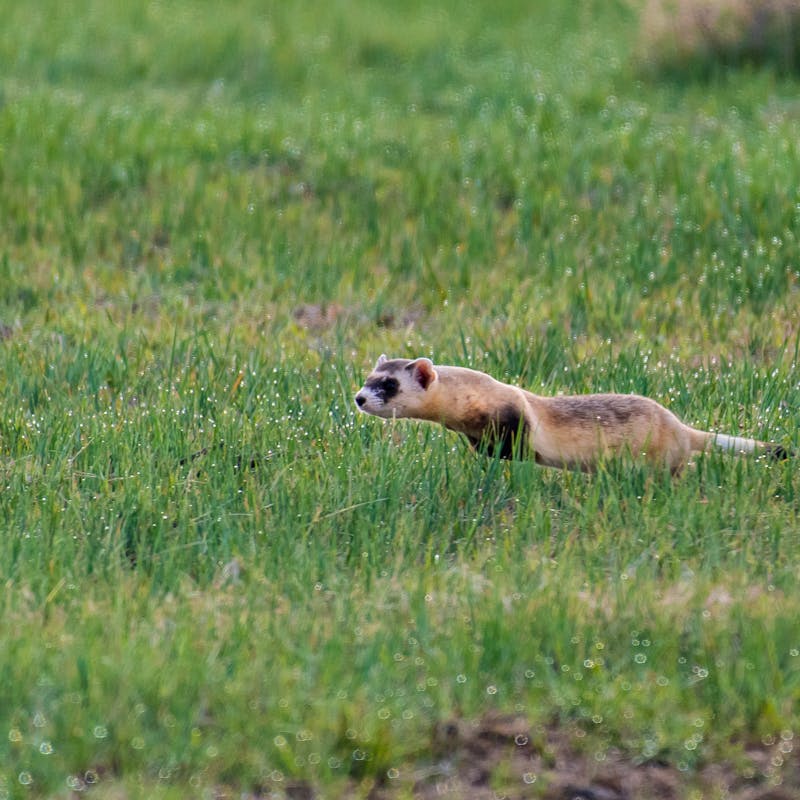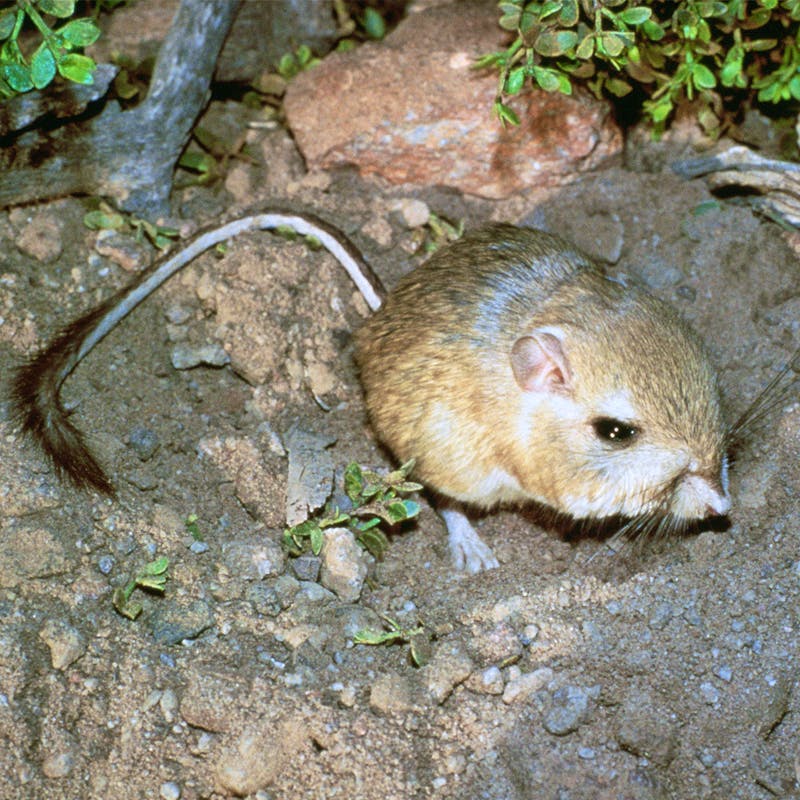The black-footed ferret was thought extinct until 1981 when it was discovered on a Wyoming ranch by a dog named Shep.
This led to a captive breeding and release program by the U.S. Fish and Wildlife Service designed to restore the species to the wild. The black-footed ferret is the focus of major conservation efforts on the ground today due to its endangered status.
Without sustainable populations of their main food source, prairie dogs, black-footed ferrets cannot survive. Over the last 100 years, prairie dog colonies across the West have been plowed and poisoned across vast areas. More than 95% of the historic prairie dog range has been lost.
A new threat is the exotic disease plague, which arrived in North America in the 1900s and can wipe out entire prairie dog colonies. The remaining 2 to 4% of colonies of prairie dogs today are relatively small and fragmented, often separated by great distances.
Threats to black-footed ferrets include loss of habitat, loss of prairie dogs, plague and human intolerance.
Defenders' Impact
As an official member of the U.S. Fish and Wildlife Service Black-footed Ferret Recovery Implementation Team, Defenders of Wildlife works with governments, non-profits and private landowners to maintain and expand recovery sites for black-footed ferrets.
Defenders helped reintroduce ferrets to Fort Belknap Reservation in northcentral Montana, mapping the recovering prairie dog colonies, dusting them to prevent plague and reintroducing ferrets. We also helped ranchers in Kansas fight to save prairie dogs and a recently-reintroduced ferret population from a century-old state law requiring the death of all prairie dogs.
In addition, Defenders has been on the ground helping landowners with coexistence tools to reduce conflict with neighboring landowners who do not want prairie dog colonies expanding onto their properties.
You can be a part of the solution for endangered species: support our efforts to protect the wild!
What You Can Do
Contact your state Senators and Representatives and governors in western states and let them know that you support prairie dog and black-footed ferret recovery.
Support Defenders efforts to further coexistence work.

About
As of 2018, black-footed ferrets have been reintroduced in multiple locations within their former range in the Great Plains in several U.S. states, Canada and Mexico. Because of their reliance on prairie dogs for food and habitat, black-footed ferrets inhabit prairie dog colonies.
Around 350 black-footed ferrets are left in the wild.
Black-footed ferrets spend about 90 percent of their time underground, where they eat, sleep and raise their young in prairie dog burrows. They are nocturnal and leave their burrows at night to hunt.
Black-footed ferret young, called kits, are born blind and helpless and stay below ground until they are about two months old. At two months old, the female begins to take her young on hunting forays and separates the kits into different burrows. By around five or six months old, the young are completely independent and will disperse to their own territories.
Mating Season: March-April
Gestation: 41-43 days. Kits are born in May-June
Litter size: 3-4 kits average; ranges from 1-7 kits
Prairie dogs make up more than 90 percent of the black-footed ferret's diet. Black-footed ferrets are also known to eat ground squirrels, small rodents, rabbits and birds.
Featured
Remembering the Re-Discovery of North America’s Ferret
In honor of the rediscovery of North America’s only native ferret species over 40 years ago, let’s burrow into seven fun facts about black-footed ferrets and their all-important food, prairie dogs.
Publications
News

Defenders Prepares for Black-Footed Ferret Mortality Following Prairie Dog Plague Announcement
Black-Footed Ferret Blog Posts











